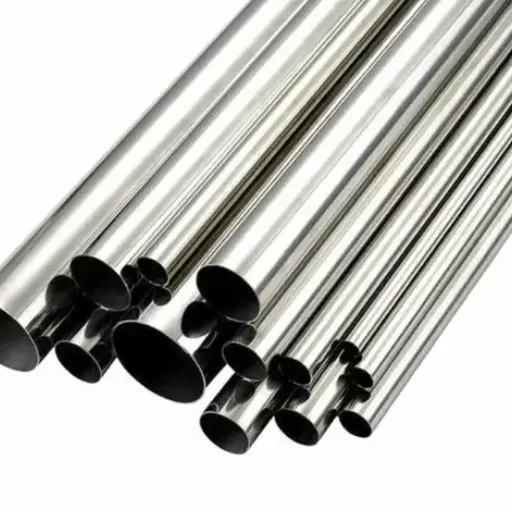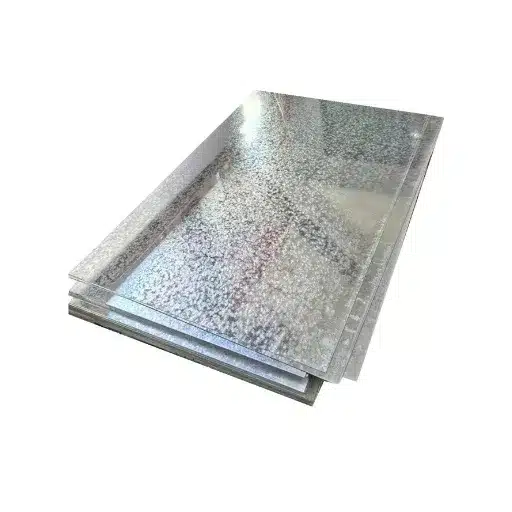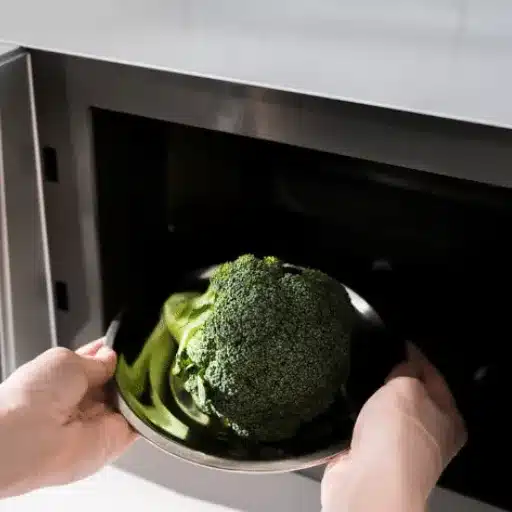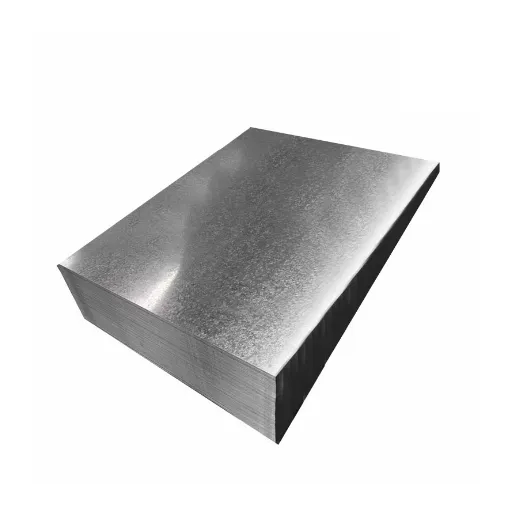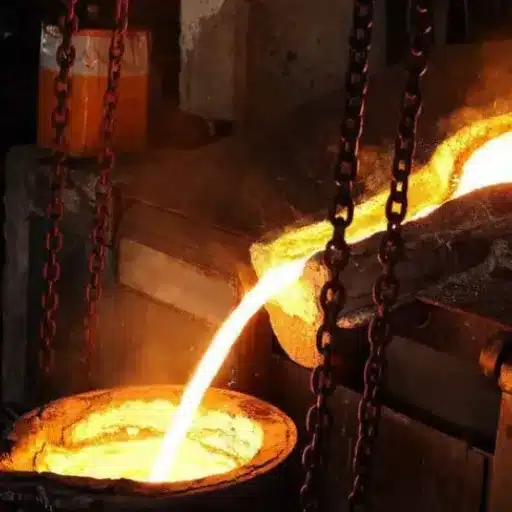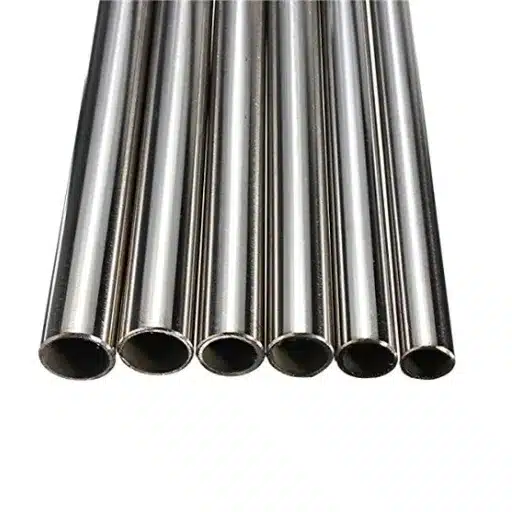Used in interference piping designed to withstand high temperature and tough service conditions, ASTM A106 Grade B carbon steel pipes are universal standards of reliability and performance. This specification is used in industries such as oil and gas, petrochemicals, and power generation, for preventing standards of seamless carbon steel pipes for high-temperature services. But what really makes ASTM A106 Grade B so peculiar? This article will discuss the distinguishing features, engineering benefits, and critical industrial applications. If you are an engineer, procurement officer, or project manager, knowing the specifications and subtle details will help you make informed decisions and optimize system performance. Follow us as we discuss everything concerning ASTM A106 Grade B carbon steel pipes.
What is ASTM A106 Grade B Pipe Specification?
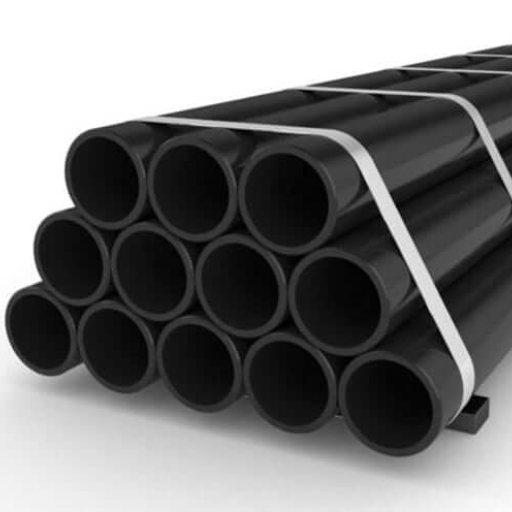
ASTM A106 Grade B pipe is a relative of carbon steel pipe specification, chiefly for high-temperature and high-pressure applications. Applications for the pipe include oil and gas, power generation, and petrochemical processing industries. The pipe is seamless and made with strict requirements of chemical composition, mechanical properties, corrosion resistance, anaerobic corrosion resistance, and so on, with the view of endurance and reliability in extremely demanding conditions. Key features include very high tensile strength, excellent heat resistance, and tolerance to potentially very harsh environmental conditions, hence making them a preferred proposition for fluid and gaseous medium transport under raised temperature conditions.
Overview of ASTM A106 Standard Specification
ASTM A106 is an American Standard that is supposed to govern the manufacture of seamless carbon steel pipe for high-temperature use. These pipes are made in three grades A, B, and C, with tensile strength increasing from grade A to grade C, for the convenience of the user in selection depending on the application requirements. This specification imposes almost rigid limits on the chemical compositions of carbon, manganese, phosphorus, sulfur, and silicon to ensure the material’s integrity during service under extreme operating conditions.
The standard also requires mechanical tests such as tensile tests, flattening tests, and bending tests to ensure the safety of the pipe in hazardous applications. The specification also defines the dimensional tolerances for pipe wall thickness, diameter, and straightness and so on, thereby enabling interchangeability on site for existing industrial systems. The pipes shall be heat-treated using the methods prescribed, such as hot-finished or cold-drawn so as to impart mechanical properties either by the old pipes or recently produced pipes.
This standard is still important today for industries that require strong, superior piping solutions and is supported by a quality assurance system that ensures all stakeholders remain steadfast on long-term reliability and safety.
Differences Between ASTM A106 and ASTM A53
|
Key Point |
ASTM A106 |
ASTM A53 |
|---|---|---|
|
Usage |
For high-temperature applications |
For low/medium pressure applications |
|
Material Grade |
Available in Grade A, B, C |
Available in Grade A, B |
|
Manufacturing Process |
Seamless |
Seamless or welded |
|
Heat Treatment |
Hot-finished or cold-drawn |
Not mandatory |
|
Chemical Composition |
Higher carbon and manganese content |
Lower carbon content |
|
Tensile Strength |
Higher tensile strength |
Lower tensile strength |
|
Pressure Vessel Applications |
Suitable |
Not suitable |
|
Temperature Tolerance |
Handles high temperatures |
Limited tolerance |
|
Surface Finish Requirement |
Typically smoother |
May allow rough surfaces |
|
NDT Requirements |
More stringent |
Less stringent |
|
Applicable Standards |
ASME, ANSI, DIN |
ASTM-specific only |
|
Primary Use |
Industrial and high-stress environments |
Water, gas, and structural purposes |
What are the Chemical Composition and Mechanical Properties of ASTM A106 Grade B?
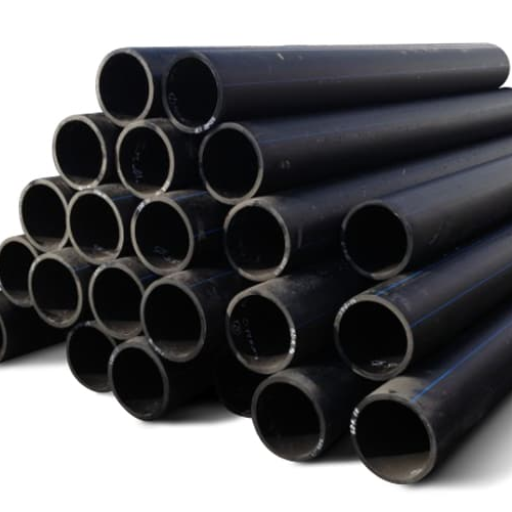
Typical Chemical Composition of ASTM A106 Grade B
ASTM A106 Grade B pipe’s chemical composition is controlled to a close range to comply with stringent mechanical and performance requirements. The approximate chemical composition is as follows:
- Carbon (C): Maximum 0.30%
- Manganese (Mn): 0.29%–1.06%
- Phosphorus (P): Maximum 0.035%
- Sulfur (S): Maximum 0.035%
- Silicon (Si): Minimum 0.10%
These compositions must strike a balance withstanding high pressures and temperatures, thereby becoming more and more attractive to industrial consumer-tiered areas, refineries, and petrochemical plants. Compositions could differ but must adhere to the stipulations specified in ASTM standards.
Key Mechanical Properties to Consider
Looking into the materials for industrial pipes, the following mechanical properties are of paramount importance with regard to satisfactory performance in very demanding conditions:
- Tensile Strength: A property against forces that tend to pull apart the material. In ASTM standards, the minimum tensile strength required is usually 485 MPa for high-performance piping systems.
- Yield Strength: Stress at which the material starts plastic deformation. For most industrial pipes, yield strength value should be at least 250 MPa to satisfy safety and regulatory requirements.
- Elongation: It is a measure of ductility expressed as a percentage increase in length before fracture. It is common that industrial pipes require at least 20% elongation to maintain flexibility and resist fracture under stress.
- Hardness: Measured using Brinell or Rockwell schemes, hardness defines resistance to deformation and wear. Piping material commonly falls in the range of 120-200 HB for best durability.
What Makes Seamless Carbon Steel Pipes Different?
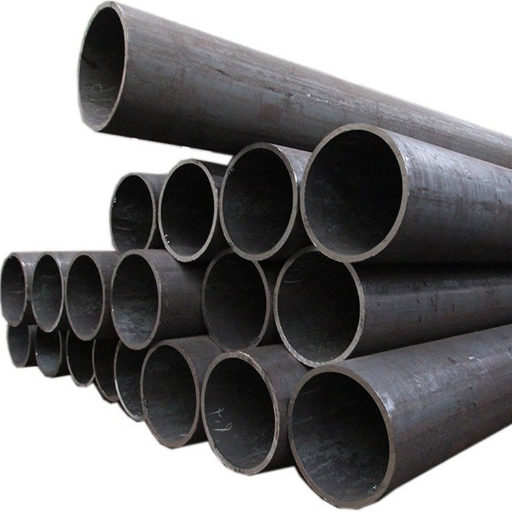
Seamless carbon steel pipes differ mainly by their manufacturing method and performance aspects. No welded seam would otherwise corrupt weld pipes. Thanks to this absence of a welded section, it becomes stronger and more durable and is hence used in high-pressure applications and in environments where technical confidence in these pipes is of utmost concern. Meanwhile, the pipes without welds have a considerably better resistance to cracking and corrosion. Any weld pipe is subjected to various processes at or adjacent to the weld joints, making it vulnerable to corrosive conditions. Whenever possible, engineers specify seamless pipes in corrosive conditions.
Advantages of Seamless Pipe over Welded Options
- Superior Strength and Durability
Seamless pipes have no weld seam and so cannot have a weak spot, which is common with welded pipes. Clean and equal structure and better mechanical qualities define seamless pipes and enable them to stand more pressure and temperature. Testing has revealed that these pipes can withstand pressures that are even 20% higher than welded versions of the same grade.
- Enhanced Corrosion Resistance
The uniform structure of seamless pipes grants them better resistance to corrosion and stress cracking, while welded pipes, in particular corrosive atmospheres, may deteriorate more rapidly at or near the weld joint. Seamless pipes find their applications especially in fields such as chemical processing and oil and gas, where corrosive substances are frequently encountered.
- Improved Flow Characteristics
The smooth cast-construction inside the pipes reduces friction, hence minimizing turbulence during fluid or gas movements. This results in minimal pressure drops and maximizes flow efficiency. Some studies have shown that in crucial applications, using seamless pipes can allow the flow efficiency to increase by as much as 15%.
- High Reliability in Critical Applications
The reputation of these pipes for reliability is built in high-pressure, high-temperature, and heavy-capacity environments in the power generation, petrochemical, and aerospace sectors. They can withstand challenging environments, thereby reducing possible failure and ensuring consistent performance over time.
- Dimensional Accuracy
Moreover, it enjoys a good tolerance because of the manufacturing mechanism that goes into the making of seamless pipes and promises a high degree of accuracy regarding diameter, wall-thickness, and concentricity that are highly important in precise engineering applications such as hydraulic systems and structural frameworks.
Applications of Seamless Carbon Steel Pipe in High-Temperature Service
Seamless carbon steel pipes, being capable of resisting thermal and mechanical stresses at very high temperatures without undergoing any change in structural integrity, are generally used in high-temperature service. The major applications considered are as follows, with some explanation:
- Power Generation
In power plants, seamless carbon steel pipe is used in boilers, heat exchangers, and steam supply systems. High-temperature exposure for a sustained period of time, exceeding 1000°F (538°C), and simultaneous retention of strength and oxidation resistance render these pipes suitable for such a sector.
- Petroleum Refineries
These pipes are commonly used in crude oil distillation, catalytic cracking, and steam reformers. Because of their high strength-to-weight ratio, they can resist scaling and may safely and efficiently operate under thermal cycling at high temperatures.
- Chemical and Petrochemical Processing
These pipes find applications in reactors, heat exchangers, and systems for process piping. Seamless carbon steel pipes stand up pretty well against the high temperatures and corrosive effects of chemical by-products and can run under pressures higher than 30,000 psi in critical systems.
- Aerospace and Automotive Industries
The aerospace industry uses them in turbine systems and exhaust structures in which the material must resist thermal fatigue and maintain mechanical properties at elevated temperatures. By similar intent, thermal stability is provided by seamless carbon steel within the automotive industry for exhaust manifolds and catalytic converter pipes.
How does ASTM A106 Grade B Compare to Other Steel Grades?
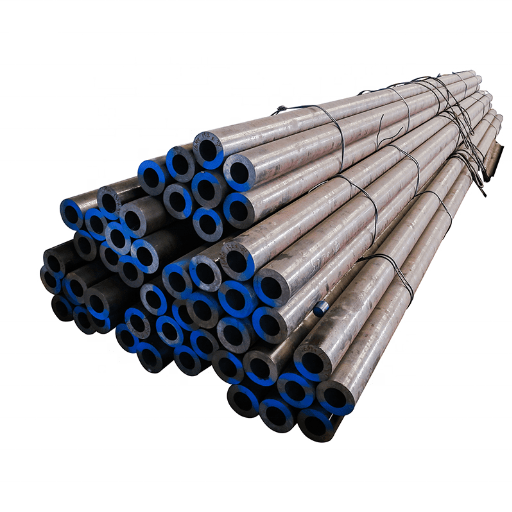
Being able to work at the most demanding temperature and pressure conditions is where ASTM A106 Grade B carbon steel has a greater reputation hence referred to as the most common type of carbon steel. Generally, power plants, refineries, and pipeline works would be excellent applications for such steel grades. They differ from the others because of strength and heat resistance, with neither ASTM A53 nor an internal weld, i.e., constructions requiring welding. Unlike structural steels such as ASTM A36, in fact, Grade B was especially designed to withstand pressure and elevated temperature better than ASMT A36 in conditions encountered in boiler and piping. Its composition and physical characteristics allow it to interface into even more demanding industrial applications where precise standards of durability and accuracy are needed. The two major standards under which heat-resistant tubular steel alloys are manufactured are:
Comparison with API 5L Grade B
|
Parameter |
ASTM A106 Grade B |
API 5L Grade B |
|---|---|---|
|
Application |
High-temperature, pressure systems |
Transmission/transport pipelines |
|
Tensile Strength (min) |
60,000 psi |
60,200 psi |
|
Yield Strength (min) |
35,000 psi |
35,500 psi |
|
Seamless/Welded Availability |
Only seamless |
Seamless and welded |
|
Temperature Suitability |
High-temperature environments |
Ambient to moderate temperatures |
|
Chemical Composition |
Higher carbon, manganese content |
Lower carbon, alloy content |
|
Specification Standard |
ASME SA106 |
API Specification |
|
Testing Requirements |
Stringent (e.g., NDE, hydrotests) |
Moderate |
|
Corrosion Resistance |
Moderate |
Designed for coating application |
|
Cost Implication |
Slightly higher |
Cost-efficient for pipeline use |
Differences Between A106 Grade B and A106 Grade C
|
Key Parameter |
A106 Grade B |
A106 Grade C |
|---|---|---|
|
Tensile Strength |
60,000 to 71,000 psi |
70,000 to 79,000 psi |
|
Yield Strength |
Minimum 35,000 psi |
Minimum 40,000 psi |
|
Carbon Content |
Approx. 0.22% |
Approx. 0.28% |
|
Maximum Manganese |
Up to 0.93% |
Up to 1.05% |
|
Usage |
General piping applications |
High-pressure pipelines |
|
Stress Resistance |
Ideal for medium stress |
Suitable for high stress |
|
Ductility |
Higher ductility |
Slightly reduced ductility |
|
Cost Implication |
Cost-effective |
Slightly higher due to strength |
|
Wall Thickness |
Standard thickness |
Can support thicker walls if required |
|
Applications |
Power plants, oil refineries |
Boiler, steam pipelines |
|
Test Requirements |
Standard ASME tests |
Enhanced strength-focused tests |
Equivalent Standards to ASTM A106
- ASME SA106: Often it is said to be interchangeable with ASTM A106, mainly in the case of seamless pipes used for boilers and pressure systems, since chemical composition and mechanical properties are closely in line with ASTM specifications.
- EN 10216-2: The European specification that covers seamless pipes intended for high-temperature service with similar application and grade like P235GH, P265GH, 16Mo3, etc., that fulfill similar performance requirements.
- DIN 17175: The DIN 17175 specification mainly describes a manufacturing specification applied in Germany for the heat-resistant seamless tubes of carbon and alloy steels.
- GOST 8731/8732 (Russia): Standardizes seamless steel pipes for high-temperature applications and corresponds functionally with ASTM A106 in terms of pressure and durability.
- JIS G3454/G3456 (Japan): Specifies carbon steel pipes for pressure and heat-resistant usage, often equivalent to ASTM A106 in industrial boiler, heat exchanger, and pipeline systems.)
What are the Common Applications of ASTM A106 Grade B Pipes?
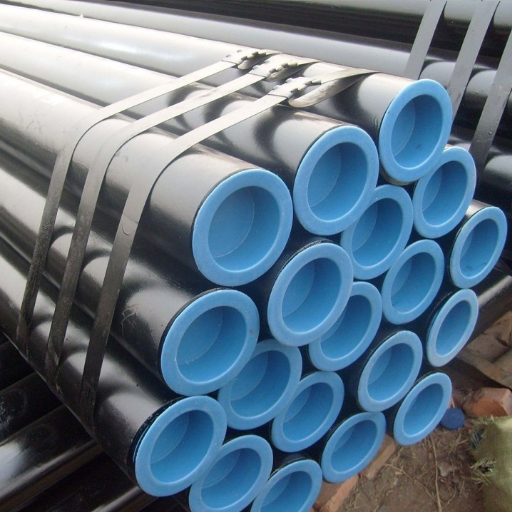
ASTM A106 Grade B pipes could be used under high temperatures and pressures and find their application in numerous industries, for instance:
- Power Plants: High-pressure steam lines and boilers.
- Oil and Gas: For transporting crude oil, natural gas, and refined products through pipelines.
- Petrochemical Plants: For process piping of high-temperature liquids and gases.
- Refineries: For piping systems that require seamless and durable piping under extreme conditions.
- Industrial Facilities: In the heat exchangers, condensers, and power generation components.
Industries Utilizing ASTM A106 Grade B Pipes
These pipes are extensively used since they possess an extraordinary mechanical property and high performance under abnormal conditions. Below is a list of key sectors where most of these pipes are installed:
- Oil and Gas Industry: Used prevalently for trains of crude oil, natural gas, and byproducts for distances, they have the ability to sustain very high-pressure levels and temperature variations.
- Power Generation: Thermal power plants provide another field in which these pipes find application. In the plants, they are required for steam generation, especially in boiler lines, condensers, and heat exchangers, where resistance to high temperature and seamless service is required.
- Chemical Processing: In chemical processing, they mainly provide fluid transport in corrosive and high-temperature environments and in reaction vessels and storage tanks. Hence, safety and ease of operation are guaranteed.
- Construction and Infrastructure: In construction and infrastructure, they are used as frameworks, foundation piling, and support for buildings and bridges, respectively, because of their strength and weldability.
- Shipbuilding and Marine Applications: These pipes are used in the making of engine parts, exhaust piping, and ballast piping, where harsh marine conditions are encountered.
These industries employ ASTM A106 Grade B pipes because of their uniform quality, applicability under extreme stresses, and strong adherence to safety and performance standards.
Benefits of Using Carbon Steel Pipes in Construction
- High Strength and Durability
Unlike many other pipes, carbon steel pipes resist heavier loads in high-pressure environments due to their tensile strength. The yield strengths for many standard grades exceed 40,000 psi. These carbon steel pipes are suitable for specific structural applications that offer permanence and safety.
- Cost-Effectiveness
Unlike alternative materials such as stainless steel, carbon steel is most economical without compromising performance. This cheapness keeps cost as a main aspect in decision-making for massive projects.
- Corrosion Resistance (with Protective Coating)
- Ease of Fabrication and Weldability
Because carbon steel is ductile and weldable by commonly used welding processes, pipes can be machined, cut, and joined with ease. This translates into less fabrication time and labor cost, funding an early completion of projects. ASTM specifications, such as A106 and A53, guarantee these features for structural purposes.
- Adaptability for High and Low Temperatures
Carbon steel pipes work efficiently in wide ranges of temperatures. Many grades perform well in extreme heats or extreme colds and are thus used in various applications like steam systems and cryogenic piping.
Reference Sources
-
Erosion–Corrosion Behavior: Erosion rates increased with sand concentration and flow pressure. The highest E-C occurred at 90° impact angles in well water. SEM analysis revealed ploughing and metal cutting at low angles, and ridge flattening at high angles.
-
Corrosion in Sodium Sulfate Solutions: Corrosion rates peaked at 0.5M Na2SO4. Higher temperatures led to denser oxide layers but also cracking.
-
Welded Pipe Corrosion Rates: Optimal corrosion resistance was achieved at 70A welding current. Higher flow rates increased corrosion rates.
Frequently Asked Questions (FAQs)
Q: What is the ASTM A106 Gr B specification?
A: The ASTM A106 Gr B specification covers seamless carbon steel pipes used for high-temperature applications. It defines the requirements for the chemical composition, mechanical properties, and testing of the pipes.
Q: How does the A106 pipe differ from other ASTM specifications?
A: The A106 pipe, specifically ASTM A106 grade B, is designed for high-temperature service, unlike ASTM A53 grade B, which is intended for general structural purposes. ASTM A106 pipes are seamless and can withstand higher pressures and temperatures.
Q: What are the tensile requirements for ASTM A106 Gr B?
A: The tensile requirements for ASTM A106 Gr B specify minimum yield strength and tensile strength values that the pipe must meet. Typically, the yield strength should be at least 35,000 psi, and the tensile strength should range from 60,000 to 80,000 psi.
Q: What is the significance of wall thickness in A106 pipes?
A: Wall thickness is crucial in A106 pipes as it affects the pipe’s strength and pressure rating. The thickness must comply with the ASTM A106 Gr B specification to ensure the pipe can handle the necessary pressure and temperature in its intended application.
Q: What types of applications are covered by the ASTM A106 Gr B specification?
A: The ASTM A106 Gr B specification is primarily used for high-temperature and high-pressure applications, including power generation, oil and gas pipelines, and chemical processing where seamless carbon steel pipes are required.
Q: Can ASTM A106 pipes be used interchangeably with ASTM A333 pipes?
A: No, ASTM A106 pipes and ASTM A333 pipes are not interchangeable. ASTM A333 is specifically designed for low-temperature service, whereas ASTM A106 Gr B is intended for high-temperature applications. The specifications and material properties differ significantly.
Q: What are the chemical composition requirements for ASTM A106 Gr B?
A: The chemical composition of ASTM A106 Gr B must meet specific limits for carbon, manganese, phosphorus, sulfur, silicon, and other elements. The maximum carbon content is typically 0.26%, and manganese must be above the specified minimum to ensure the pipe’s strength.
Q: Are there different grades of A106 pipes?
A: Yes, there are different grades of A106 pipes, including grade A, grade B, and grade C. Grade B is the most common and is often used for its balance of strength and ductility, making it suitable for a variety of applications.
Q: What is the difference between seamless and welded A106 pipes?
A: Seamless A106 pipes are manufactured without a weld, providing a uniform structure and higher strength, making them suitable for high-pressure applications. Welded pipes, while generally less expensive, may not meet the same performance standards as seamless pipes in high-temperature conditions.
Q: How does ASTM A106 Gr B compare to ASTM A335?
A: ASTM A335 is a specification for seamless alloy steel pipes intended for high-temperature service, while ASTM A106 Gr B is for carbon steel pipes. The materials used and their mechanical properties differ, with A335 pipes often used in more demanding applications due to their improved properties.

